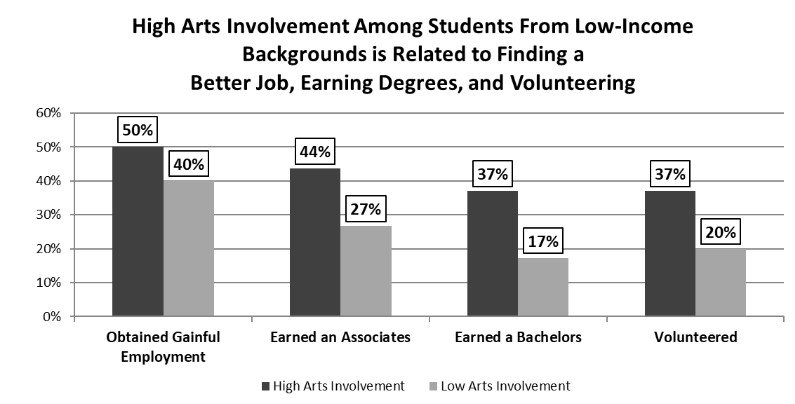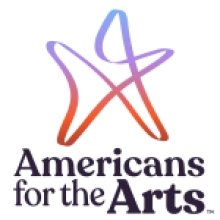Provided by AmericansForTheArts.org
Students from low-income backgrounds who are highly engaged in the arts are more than twice as likely as their peers with low-arts involvement to earn a bachelor’s degree.

In the late 1990s, UCLA education researcher, Dr. James Catterall, analyzed data from the National
Educational Longitudinal Survey—a study of 25,000 secondary school students—over four years. He
found significant connections between high involvements in arts learning and general academic
success.
In 2009, Catterall analyzed 10 additional years of data for the exact same cohort of students, now
aged 26. The results strongly connect arts learning with continued success in academics and in life.
- The study found significant advantages for “arts engaged low‐socioeconomic status [low-
SES] students” in college-going and types of employment as well as strong advantages in
volunteerism and voting. - Employment for the arts students included better jobs with higher pay, more responsibility,
more promotion opportunity, and more employee satisfaction. - Catterall concluded that the benefits to arts-engaged students are measurable and
unparalleled. He states: “In the annals of education research, it is hard to find average
performance or outcome statistics reported for low‐SES students that exceed such measures
for the entire population.”
 MACT
MACT